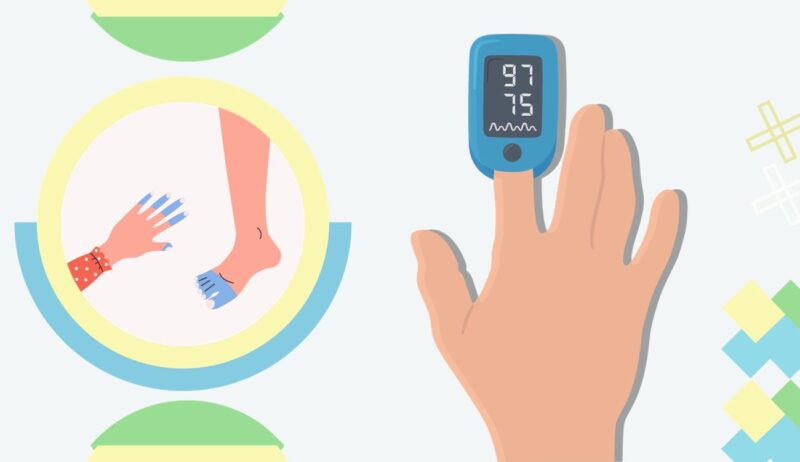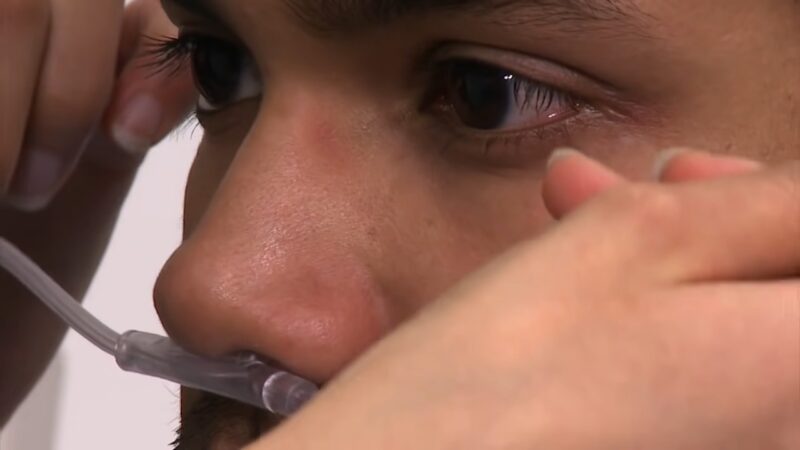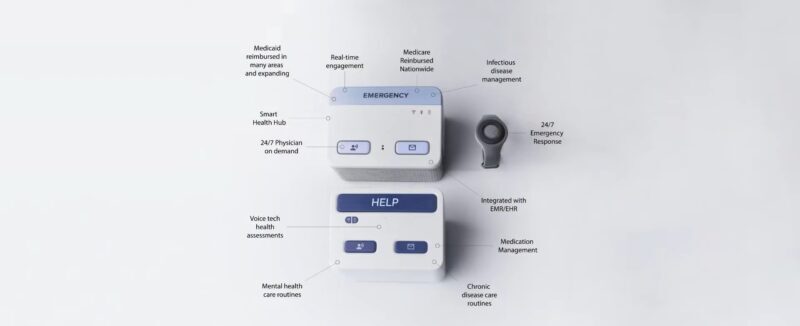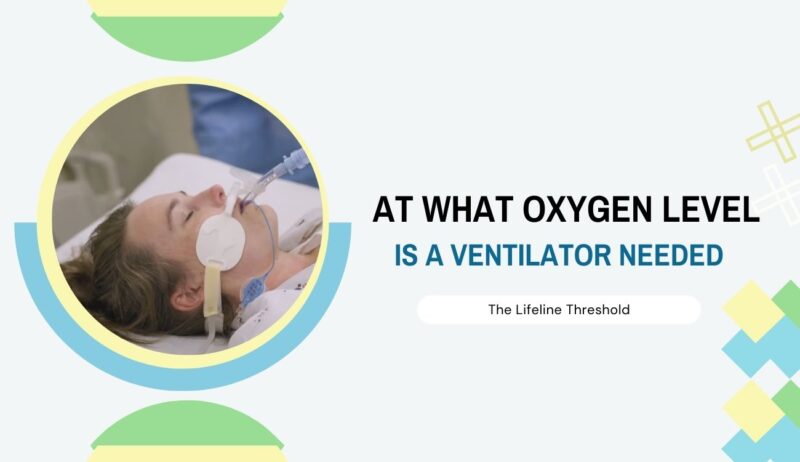Every cell in our body relies on this vital element to function optimally. Certain situations and conditions can impede the body’s ability to maintain the right oxygen balance, sometimes leading to the need for external assistance.
One of the most discussed methods of such assistance is the use of ventilators. But at what point does one require such intervention?
In this insight we will explore when and why a ventilator might become necessary, offering insights into the complex interplay of factors that determine our respiratory health.
Oxygen Saturation
The human body requires a specific amount of oxygen to function properly. The saturation is an essential measure that gauges the level of H2O in the bloodstream. When these levels dip below normal, it may become necessary to provide external support.
The Basic Saturation
Oxygen saturation, commonly referred to as SpO2, signifies the percentage of hemoglobin molecules in the bloodstream that are carrying oxygen. In a healthy individual, this number typically ranges between 95% to 100%.
It’s crucial to note that while most of us have similar optimal SpO2 levels, the exact number can vary based on age, altitude, and specific health conditions. It’s also vital to understand that SpO2 doesn’t directly measure the amount of oxygen in the body.
Instead, it assesses how well the body is utilizing the available oxygen. When saturation decreases, it indicates that the body isn’t getting the amount it requires, possibly leading to various complications.
Factors Influencing Oxygen Saturation
Numerous elements can affect oxygen levels in the bloodstream. These include chronic conditions like COPD or asthma, acute conditions like pneumonia or trauma, high altitudes, and even certain medications. It’s imperative to be aware of these factors and how they may influence one’s SpO2.
Factors such as smoking or exposure to certain pollutants can also negatively impact oxygen saturation.
Regular check-ups and monitoring are essential to ensure that SpO2 remains within a healthy range, especially for those with underlying health conditions.
When External Support Becomes Vital

Oxygen is vital for every cell in our body. But what happens when our bodies can’t get enough on their own? Here’s when external mechanisms, like ventilators, come into play.
Symptoms of Low Saturation
Before diving into the specifics, it’s essential to recognize the symptoms of low oxygen saturation. These can include shortness of breath, bluish discoloration of the skin or lips, chest pain, rapid breathing, and confusion. Early identification can be the key to prompt and effective intervention.
Persistent low oxygen levels can lead to complications such as heart strain, brain damage, and organ failure. Therefore, knowing the signs and seeking medical attention when they appear is of utmost importance.
Determining the Need for a Ventilator
Typically, if SpO2 levels fall below 90%, it’s considered low and might necessitate intervention. The exact threshold for when a ventilator becomes necessary varies. In certain cases, doctors might initiate ventilatory support even at higher SpO2 levels if they anticipate a rapid decline or other complications.
There are different interventions for low levels, including supplemental oxygen delivered via nasal prongs or masks. A ventilator might be considered when these measures are insufficient, or if the patient’s ability to breathe independently is compromised.
The decision is always made based on the individual’s overall health, the cause of the low levels, and other clinical considerations.
Additional Support Methods

Maintaining optimal oxygen levels is paramount. While ventilators are a well-known method, they are not the only option. Here are some alternatives and complementary strategies.
Supplemental Therapy
One common intervention for low SpO2 levels is supplemental therapy. This involves providing patients with additional oxygen, typically through nasal cannula or face masks. The flow rate and method are adjusted based on the patient’s needs.
Benefits of this approach include increased levels without the need for invasive procedures, improved symptom relief, and decreased strain on the heart.
Positional Changes and Breathing Exercises
Simple positional changes can help improve oxygen saturation. For instance, lying on one’s stomach, known as prone positioning, has been found beneficial for certain patients with respiratory distress. Breathing exercises can also be beneficial.
Techniques like:
- Pursed-lip breathing: Helps improve oxygen exchange.
- Diaphragmatic breathing: Strengthens the diaphragm.
- Deep coughing: Clears out secretions.
The Role of Altitude
The altitude at which one resides or visits can significantly affect oxygen saturation. As one ascends in elevation, the atmospheric pressure decreases, and this can influence the body’s oxygen intake.
Effects of High Altitude on Oxygen Saturation
At higher elevations, the amount of oxygen in the atmosphere remains the same, but the reduced atmospheric pressure means each breath takes in fewer molecules. This can lead to a condition called altitude hypoxia. Symptoms of altitude hypoxia include dizziness, shortness of breath, rapid pulse, and nausea.
For most people, the body will eventually adapt to the decreased oxygen levels after some time at high altitudes. This process, known as acclimatization, involves increased breathing rate and production of more red blood cells to carry oxygen. If acclimatization doesn’t occur quickly enough, there’s a risk of altitude sickness.
Mitigating the Effects of Altitude
For those traveling to high-altitude areas, gradual ascent is recommended. This gives the body time to acclimatize and reduces the risk of altitude sickness. Staying hydrated, getting adequate rest, and avoiding alcohol can also help in preventing altitude-related complications.
In some instances, medications might be prescribed to help with acclimatization. Supplemental oxygen can be beneficial for those struggling with oxygen saturation at high elevations. In severe cases, descending to a lower altitude is the best solution to alleviate symptoms.
The Holistic Approach
While oxygen levels are crucial, it’s equally essential to adopt a holistic approach to respiratory health. Diet, lifestyle, and mental well-being play a role in overall lung function and health.
A balanced diet rich in antioxidants can support lung health. Foods like berries, nuts, and leafy greens have been linked to improved lung function. On the contrary, processed foods and those high in trans fats may harm respiratory health.
Omega-3 fatty acids found in fish and flaxseed can also have anti-inflammatory effects beneficial for the lungs. Drinking enough water aids in keeping the mucosal linings in the lungs thin. This helps in better lung function and reduces the risk of inflammation.
Lifestyle Choices and Mental Well-Being
Regular exercise, especially cardiovascular workouts, can strengthen the respiratory muscles and improve overall lung capacity. It’s also vital to avoid smoking and limit exposure to pollutants, as these can significantly deteriorate lung health over time.
Stress and anxiety can exacerbate respiratory issues. Practices like meditation, deep breathing exercises, and yoga can be instrumental in managing stress and ensuring a holistic approach to respiratory health.
Chronic Conditions and Their Impact

Chronic health conditions often have a long-term effect on the respiratory system. Their impact on oxygen saturation can be significant, requiring frequent monitoring and, at times, external interventions.
Common Chronic Conditions
Chronic Obstructive Pulmonary Disease (COPD) is one such ailment that affects the lungs’ ability to intake and process. Over time, this can lead to decreased levels and may necessitate supplemental oxygen. Similarly, conditions like cystic fibrosis, pulmonary fibrosis, and certain heart diseases can impair the lungs’ efficiency.
Asthma, another chronic condition, might not always result in reduced oxygen levels. During an acute flare-up or asthma attack, the narrowed airways can lead to a temporary dip in oxygen saturation, which can be concerning if not addressed promptly.
Management and Monitoring
Regular check-ups and monitoring of SpO2 levels are essential for those with chronic conditions. Medical professionals might recommend pulse oximeters for home use, ensuring that oxygen levels can be checked frequently.
Alongside medical treatments and medications, lifestyle interventions such as pulmonary rehabilitation can be beneficial. These programs offer exercise, education, and support to help patients breathe and function at their fullest capacity.
Environmental and External Factors
Our surroundings play a crucial role in determining respiratory health. Environmental factors, both natural and man-made, can influence the levels and overall lung function.
Air Quality and Pollution
Urban areas, especially those with high vehicle traffic, often have compromised air quality. Pollutants such as carbon monoxide, particulate matter, and nitrogen dioxide can hinder the lungs’ ability to effectively process oxygen. Prolonged exposure can exacerbate existing conditions and increase the risk of respiratory diseases.
Ensuring clean indoor air is equally crucial. Avoiding smoking indoors, using air purifiers, and ensuring good ventilation can mitigate indoor pollutants’ effects.
Seasonal Allergens and Respiratory Health
Seasonal allergens, such as pollen, can trigger allergic reactions in many individuals. This can lead to symptoms like sneezing, nasal congestion, and in some cases, asthma-like symptoms. During peak pollen seasons, those with sensitivities might experience a dip in their oxygen levels.
Staying informed about pollen counts and minimizing outdoor activities during high counts can be beneficial. Using air conditioners with clean filters and keeping windows closed can help reduce indoor pollen exposure.
FAQs

How long does a patient usually stay on a ventilator?
The duration a patient remains on a ventilator varies widely based on the underlying condition, its severity, and the patient’s overall health. It can be as short as a few hours to days, weeks, or even longer in severe cases.
Can a patient talk while on a ventilator?
It’s challenging for patients to talk while intubated and on a ventilator because the tube passes through the vocal cords. However, some advanced ventilators and techniques may allow for limited speech.
What’s the difference between supplemental oxygen therapy and a ventilator?
Supplemental oxygen therapy involves providing extra oxygen usually through nasal prongs or masks without actively assisting the breathing process. A ventilator, on the other hand, actively pushes air into the lungs, assisting or taking over the breathing process.
Are there risks associated with using a ventilator?
Yes, while ventilators are life-saving devices, they come with potential risks such as lung injuries, pneumonia, and sinus infections. It’s essential to monitor patients closely and weigh the benefits against potential risks.
Can patients on ventilators eat or drink?
Patients who are intubated and on ventilators cannot eat or drink through their mouths. Instead, they may receive nutrition through a feeding tube or intravenously.
Summary
While ventilators play an indispensable role in certain situations, they are just one piece of the broader respiratory health puzzle. Adopting a comprehensive approach that incorporates monitoring, preventive measures, and awareness can help ensure that our lungs—and by extension, our entire body—function at their best.
As with many health concerns, knowledge is power. Being informed about the intricacies of oxygen saturation and its implications allows us to advocate for our well-being and make informed decisions when faced with respiratory challenges.
If you want to get an insight into other relevant medical subjects, visit our site.


